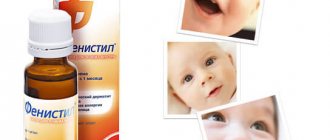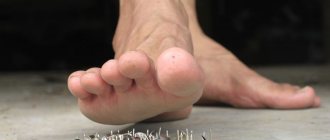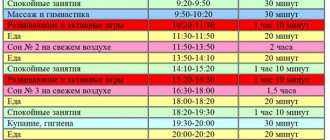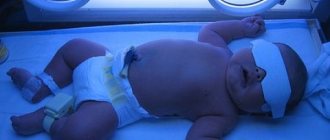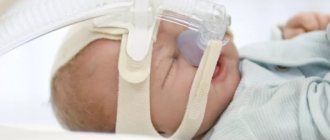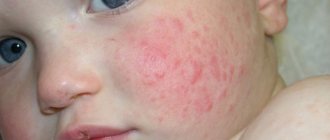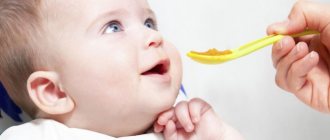Ingrown toenail in a child (Onychocryptosis in children)
Conservative therapy
This direction of treatment does not affect the etiopathogenetic mechanism, therefore it does not lead to complete recovery; it is aimed at preparing for surgical methods and eliminating some symptoms. As an independent measure, conservative treatment is possible for children with stage 1 ingrown toenails. Includes the following methods:
- Orthopedic mode
. Involves wearing loose shoes, limiting walking and physical activity on the affected leg. - Local treatment
. Sanitizing baths with a warm hypertonic salt solution, a weak solution of potassium permanganate, and furatsilin are used. To prevent infectious complications, compresses with antiseptics and applications of antibacterial creams and ointments are prescribed. - Treatment of concomitant pathology.
For mycotic nail infections, specific treatment is required. Use local therapy with antifungal drugs or systemic administration of antifungals.
Surgery
The surgical method of treatment has gained wide popularity for the problem of ingrown toenails in children and is recognized as the most promising and effective. Interventions carried out in the early stages of the disease have more positive results. There is no consensus among pediatric surgeons about the indications for surgery. The advisability of surgical treatment for uncomplicated forms is determined by the personal views and experience of the doctor. Basic techniques:
- Marginal resection of the nail plate
. The operation is performed with local anesthesia. The ingrown area is freed from the damaged tissue, excised, and blind sutures are placed on the postoperative wound. With this method, the germ layer is damaged, which causes pathological deformation. The operation is palliative and carries a high risk of relapse. - Removal of the nail plate
. According to long-term observations, after simple removal of the entire plate, the pathology recurs in 20-50% of cases. The best effect is obtained by partial excision of the damaged nail and underlying matrix, applying two or three sutures and a gauze bandage soaked in an antibiotic solution to the wound. - Radical operations
. In case of a complicated ingrown toenail with a large area of ingrowth, extensive surgical interventions are used: according to Schmiden, Bartlett. Such manipulations include resection of an ingrown nail, subungual tissue, and periungual fold. Radical techniques are carried out with preliminary preparation, which may include anti-inflammatory therapy, marginal removal of the nail plate. - Laser and radio wave method
. Removal using radio waves or a laser beam is possible in pediatric practice, but at this stage requires additional study. The methods are low-traumatic, almost bloodless. An aseptic bandage is applied to the postoperative wound without suturing the edges.
Orthopedic treatment
Correction of the shape of the nail using plates and staples is carried out in children over six years of age, in the initial stages of an ingrown nail, with an uncomplicated course. The plate or bracket is tightly attached perpendicular to the growth of the nail, the side arcs or hooks at the ends are fixed at the side edge, bring it out from under the nail folds, and prevent ingrowth. Among the numerous devices, the “BS Standard”, “Onyclip” plates, and the Fraser bracket have been used in children.
24.09.2019
Almost every third person suffers from such a disease as an ingrown toenail . Outwardly, this resembles the ingrowth of the nail plate into the soft tissue of the toe . Most often, this problem appears on the big toe, although in some cases an ingrown toenail can also be observed on other, neighboring toes . In adults, ingrown nails into the periungual fold occur for various reasons. And most often the problem is created by the person himself. An ingrown toenail in a newborn is a completely different problem, although the symptoms are the same.
Statistics show that this disease (or in other words, deformation of the nail plate) appears in infants in the first month after birth. And if in adults the causes of ingrown toenails can be fungal diseases and wearing uncomfortable, tight shoes, then in infants there are other reasons. Basically, ingrown toenails appear in those children who have a genetic predisposition to this disease. But fungal infections can also overtake a newly born child. And talk here about yeast fungi that a child becomes infected with during the passage of the birth canal.
Additionally, we can list the most common causes of ingrown toenails in newborns. Among them are the following points:
- congenital nail pathology;
- poorly developed skeletal system (fragile bones , thin nails);
- nail injury;
- using thick scissors when cutting;
- untimely care.
What are the symptoms of an ingrown toenail in babies? In principle, they coincide with the symptoms in adults. When the nail plate begins to grow into the soft tissues of the finger, redness appears in this place, the child feels pain when pressed in this place and begins to be capricious or cry. Also, a finger with an ingrown nail begins to swell, and signs of an inflammatory process appear.
If treatment is not started in time, then pus may accumulate at the site of the ingrown nail plate. It is formed as a result of bacteria entering the affected area. In this case, it is necessary to urgently take action and consult a doctor , since independent attempts to solve the problem can only aggravate the inflammation process.
Today, treatment for ingrown toenails in infants is offered using conservative and surgical methods. In the second case, specialists resort to partial or complete removal of the nail plate. But in 60% of cases this treatment method produces relapses. Also, the newborn’s bone tissue is not yet fully formed. And in place of the removed nail, a new one may grow deformed or not grow at all.
That is why doctors in most cases carry out conservative treatment of ingrown toenails in children, which consists of drug therapy , elimination of unpleasant symptoms and prevention. Orthonyxia is used as the latter. This is a method that aims to straighten a curved nail. And since in infants the nail plates are thinner than in adults, changing the vector of nail growth will not be difficult.
That piece of nail that begins to cut into soft tissue should never be cut off. Of course, this method may give relief to the child, relieving him of pain, but soon the nail will grow back and the situation will repeat itself.
Therefore, experts recommend placing a small piece of cotton wool under the curved corner of the nail, and also applying a soft and elastic bandage to the sore finger. When the nail grows and extends beyond the border of the periungual fold, it must be cut along the edge exactly horizontally, but not end-to-end. This treatment method depends on the intensity of nail growth in the baby.
Published in Surgery Premium Clinic
Symptoms of the disease
The manifestation of onychocryptosis in children is difficult to detect when the child cannot explain what is bothering him. Mom may notice swelling and redness of the nail fold. If pus is released, you should consult a doctor to treat and treat the affected area. Independent actions can aggravate the problem and lead to the need to remove a child’s ingrown toenail.
Main symptoms:
- pain that gradually increases;
- redness and swelling, if infection occurs, suppuration occurs;
- overgrowth of the affected area with soft tissues;
- increased body temperature as a consequence of the inflammatory process.
Why do infants' toenails grow ingrown?
Onychocryptosis, oddly enough, can also be diagnosed in newborns. While in older children and adults the problem is usually localized to the big toe, in children it can affect all the toes. The reason lies in hereditary predisposition. In this case, the nail grows downward rather than forward. Predisposing factors also include congenital diseases - curvature of the nail plate, thickening of the nail fold.
Improper care is one of the reasons for ingrown nails in infants
Improper hygiene care plays a certain role in the occurrence of the problem. If you trim your nails into a rounded shape, the growing side corners will gradually cut into the skin. This process is long and at first asymptomatic.
One of the dangers is that you may not notice for a long time that your baby’s nail is ingrown. The baby will start crying “for no reason.” To prevent this from happening, carefully examine your child’s fingers and feet during hygiene. The slightest redness is a reason to take urgent action.
The instrument with which the procedure is carried out is also important. Thick scissors injure the thin nail plate, and it gradually begins to bend. This is why special “safety” scissors for children are not always the best option. Yes, a child is unlikely to cut himself with such a tool, but not very sharp children's scissors “tear” the nail plate and gradually deform it.
Causes of ingrown toenails
External reasons
- Incorrectly performed manicure or pedicure
Accidentally cut off a corner of a nail with nail scissors, leaving a hangnail or a sharp edge. They rubbed the skin around the nail with the edge of the scissors, or cut the nail plate too short. These reasons provoke ingrowth in 95% of cases.
- Heavy load on the legs
Obesity, pregnancy and the postpartum period.
- Narrow, uncomfortable shoes
Inappropriate shoes, even with high heels and tight tights, gradually compress and deform the nail.
Diseases
- Flat feet and valgus feet
Flatfoot is a change in the shape of the foot, characterized by drooping of its longitudinal and transverse arches. Foot valgus is a disease in which the big toe is displaced outward, and the bone with which the toe forms a joint, on the contrary, is displaced inward.
- Poor nutrition, diabetes, vascular and heart disease, all kinds of endocrine pathologies.
- Performing radiation or chemical therapy for oncology.
- Fungus.
Fungus is a lesion of the nail plate called onychomycosis. The microorganisms that cause the disease develop best in a warm and humid environment, so onychomycosis develops more often on the toes than on the hands.
- Frostbite, mechanical damage to fingers.
- Skin diseases (psoriasis, lichen, warts, etc.).
- Excess soft tissue in the subungual pad.

